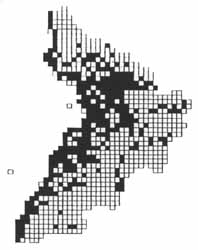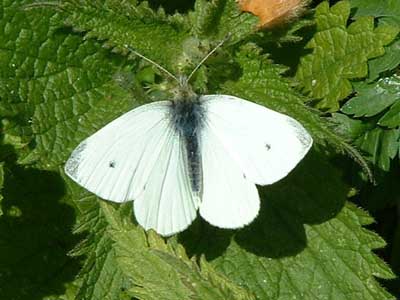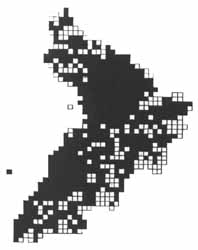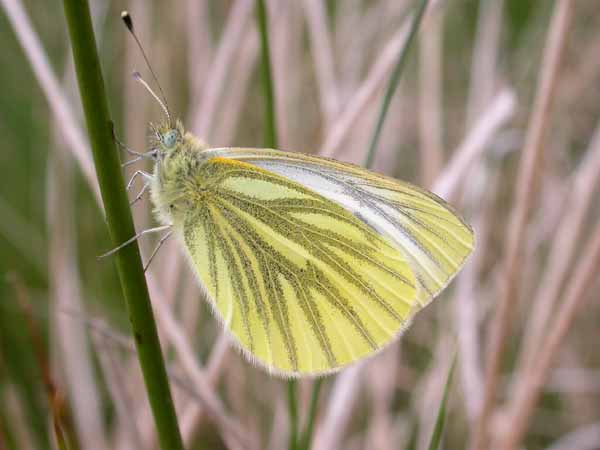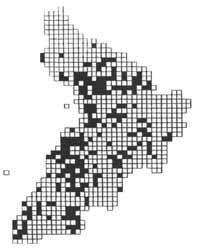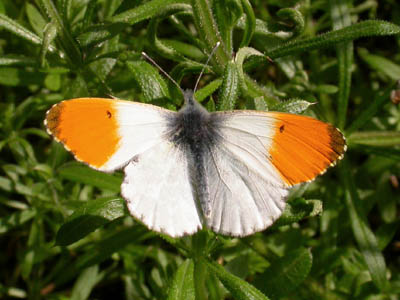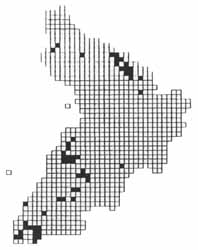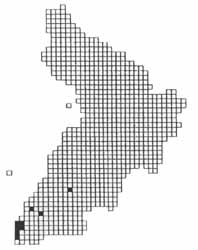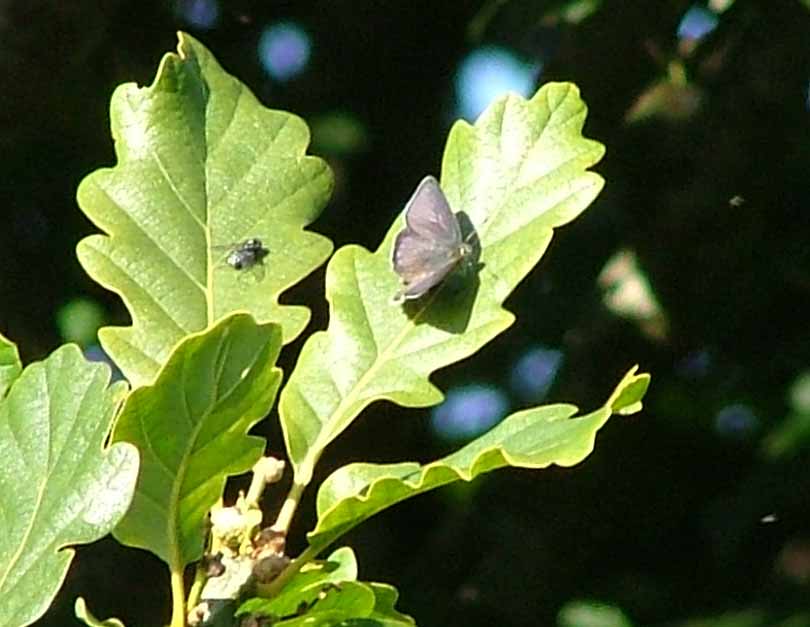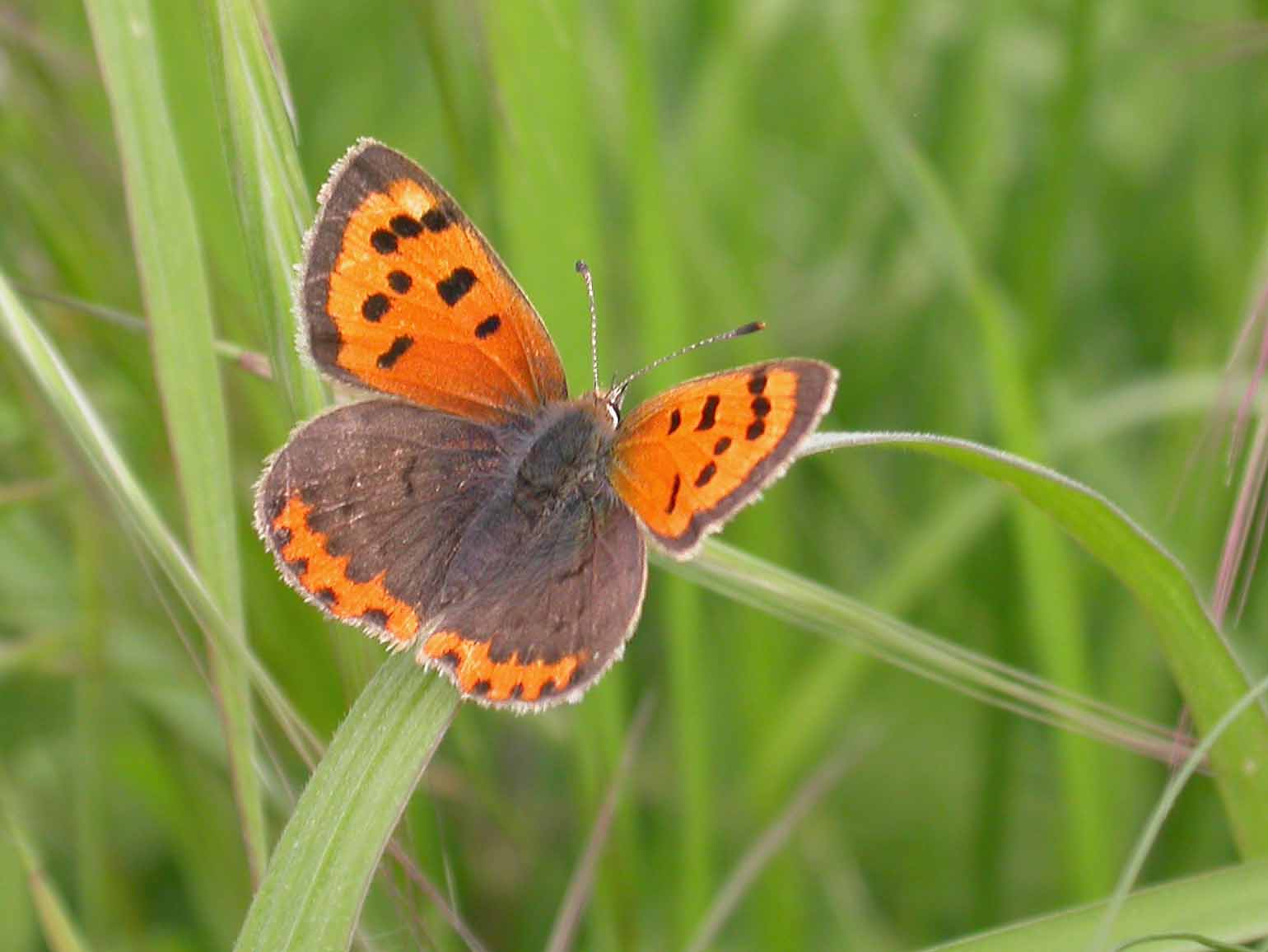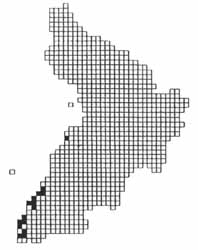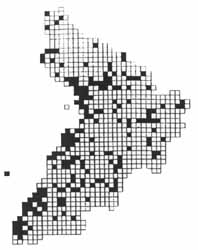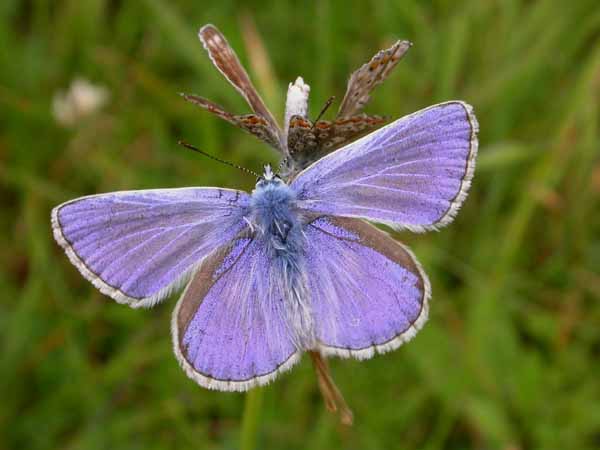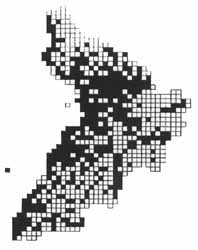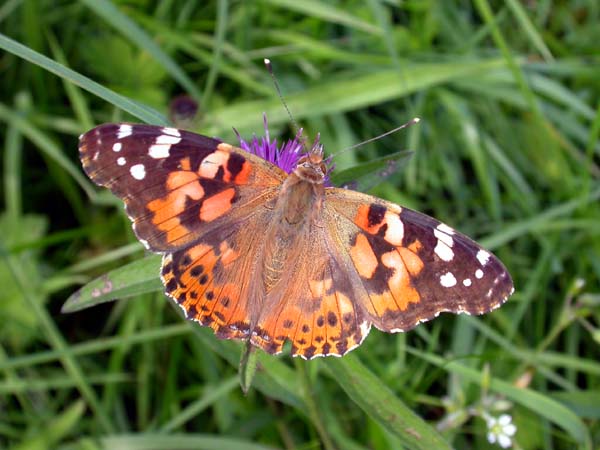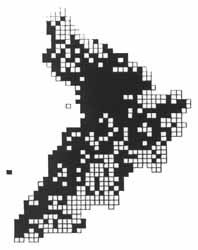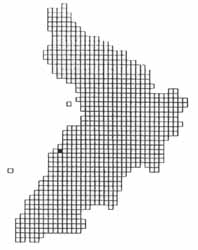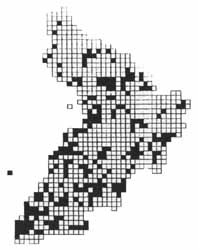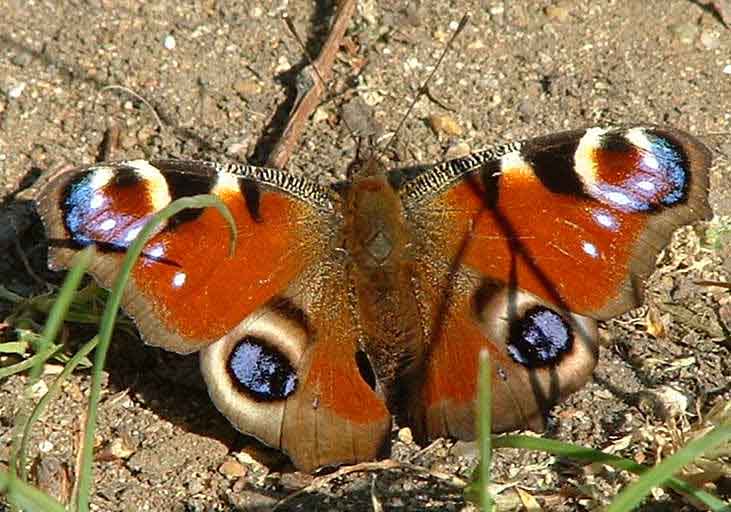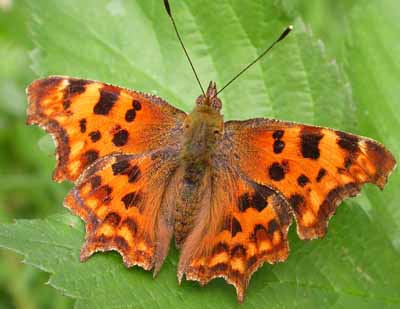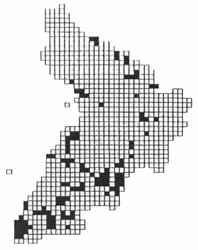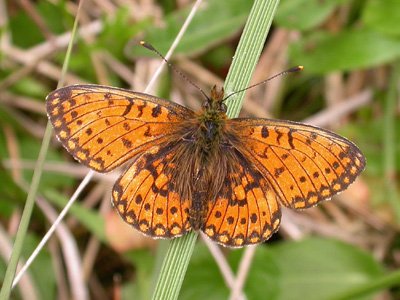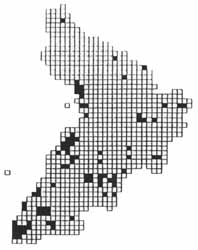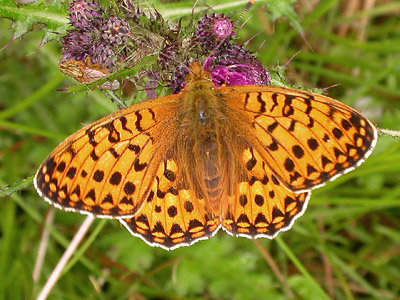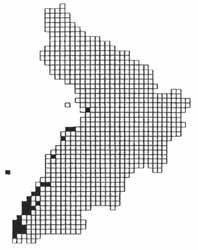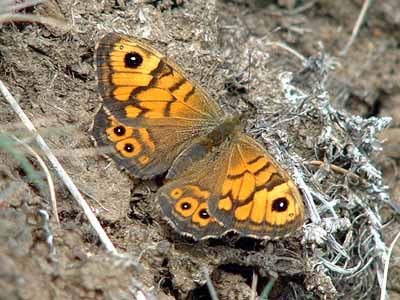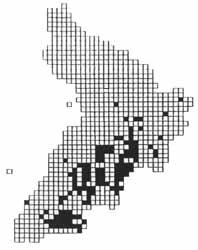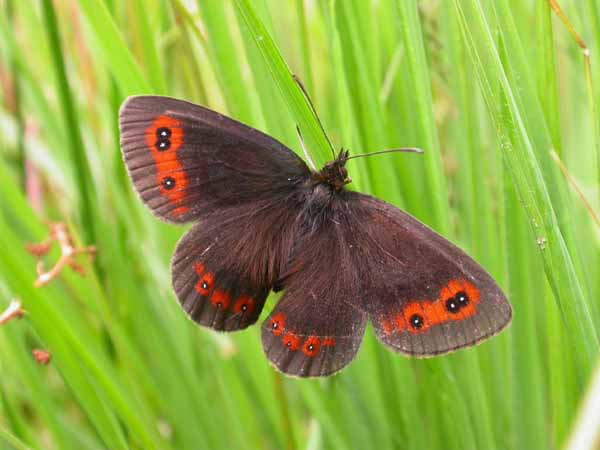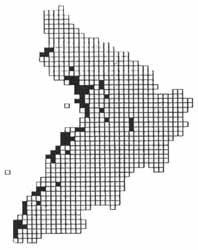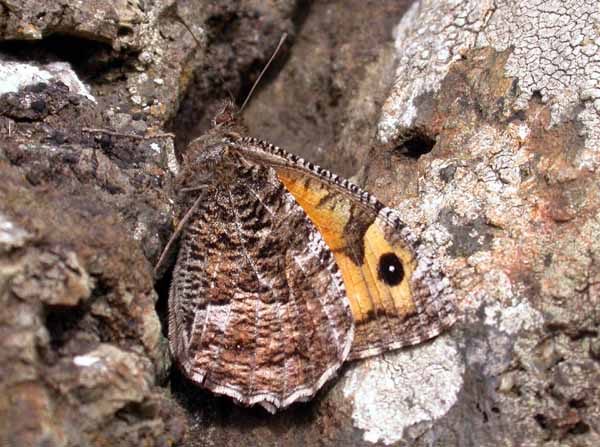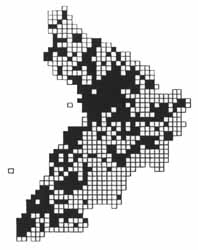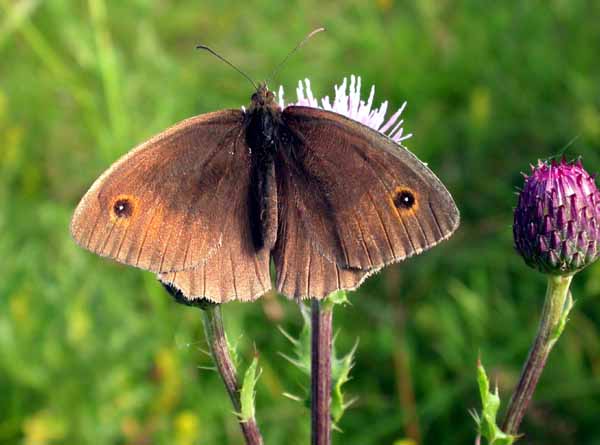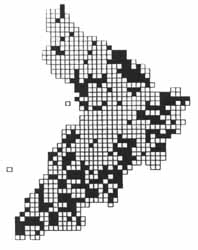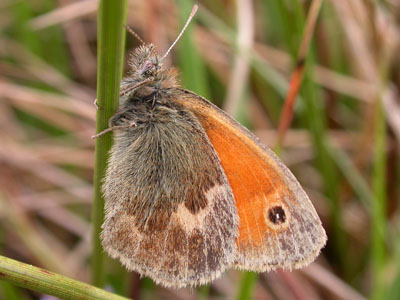|
|
|
|
Home | Trip Reports | Recent Sightings | Blog | Photographs | Phonescoping | Sounds & Sonograms | Sketches | Patches | Butterflies & Dragonflies
|
|
|
| The Butterflies of Ayrshire | Ayrshire (vice-county 75), in south west Scotland, has 22 resident species. A further five migrant butterflies originate from Continental Europe and southern England in variable numbers ranging from extreme rarity (Camberwell Beauty and Comma), to irregular (Clouded Yellow and Painted Lady) to annual (Red Admiral).
Due to its geographical location in Europe, Ayrshire is rather poor in terms of species diversity. However, it is one of the better areas in Scotland and is home to several species of conservation concern, either in a regional or UK context:
• Northern Brown Argus Aricia artaxerxes • Small Pearl-bordered Fritillary Boloria selene • Large Heath Coenonympha tullia
Ayrshire is largely dominated by forested and grazed uplands (to 782 metres) in the north, east and south, and pastoral and mixed farmland in central areas. Smaller tracts of bog, moss, saltmarsh, dune, coastal grassland and deciduous woodland harbour the most valuable sites in the county.
Large Skipper Ochlodes venata Status: Locally common resident in the south-west. Possibly expanding northwards into central areas. Habitat & Distribution: Rich, long grassland in sheltered coastal sites, forest rides and scrubby areas. Flight Period: June-July. Univoltine. Larval food plant: Cocksfoot (Dactylis glomerata). Probably also Purple Moor Grass (Molinia caerulea) on higher ground.
Status: Very rare resident - seldom recorded. Habitat & Distribution: Lightly grazed and sheltered limestone grassland with bare ground patches. Flight Period: Uncertain, but a period within May-June. Univoltine. Larval food plant: Not determined but likely to be Birdsfoot Trefoil (Lotus corniculatus).
Clouded Yellow Colias croceus Status: Irregular migrant, usually in very small numbers. Habitat & Distribution: Mainly coastal and lowland areas. Flight Period: Migrants arrive June-July. Univoltine. Progeny emerging August-October. Larval food plant: Clover (Trifolium spp.) and Birdsfoot Trefoil (Lotus corniculatus).
Large White Pieris brassicae Status: Fairly common resident and migrant - abundant in some years. Habitat & Distribution: Breeding mainly in lowland and coastal areas. Migrants more widespread. Flight Period: Late May to early October. Bivoltine. Larval food plant: Wild and cultivated Cabbages (Brassicaceae family).
Small White Pieris rapae Status: Common resident and migrant -abundant in some years. Habitat & Distribution: Breeding mainly in lowland and coastal areas, particularly gardens and cultivated areas. Flight Period: Late April to mid-October. Bivoltine. Larval food plant: Wild and cultivated Cabbages (Brassicaceae family).
Green-veined White Pieris napi Status: Common resident - abundant in suitable habitat. Habitat & Distribution: Ayrshire's most widespread species with a preference for damper areas in both lowland and higher ground. Flight Period: Late April to late September. Bivoltine. Second brood populations usually stronger. Larval food plant: Cruciferae species and Lady's Smock (Cardamine pratensis).
Orange Tip Anthocharis cardamines Status: Fairly common resident - range expanding annually. Habitat & Distribution: Widespread in damper areas of the lowlands, river valleys and moorland forestry rides and edges. Flight Period: Late April to late June. Univoltine. Larval food plant: Mainly Lady's Smock (Cardamine pratensis).
Green Hairstreak Callophrys rubi Status: Locally common resident in suitable habitat. Habitat & Distribution: Sheltered upland sites on moorland, particularly coniferous forest edge. Flight Period: Late Apr to late June. Univoltine. Larval food plant: Blaeberry (Vaccinium myrtillus).
Purple Hairstreak Neozephyrus (Quercusia) quercus Status: Scarce and overlooked resident in oak woodland in the south - periodically abundant at one or two sites. Habitat & Distribution: Mixed, mature woodland containing oaks. Exposed scrubby Sessile Oak woodland near the southern coast. Range expansion limited by the fragmented nature of Ayrshire's deciduous woodland. Flight Period: Mid-July to early September. Univoltine. Larval food plants: Sessile Oak (Quercus petraea), Pedunculate Oak (Quercus robur).
Small Copper Lycaena phlaeas Status: Widespread and common in suitable habitat. Habitat & Distribution: Various types and heights of unimproved grasslands away from agricultural swards. More common on the coast but also found in sheltered upland sites. Flight Period: Mid-May to October. Bivoltine. Larval food plants: Dock and Sorrel (Rumex spp.).
Northern Brown Argus Aricia artaxerxes Status: Scarce resident forming small, discrete colonies. Habitat & Distribution: Rabbit-grazed and ungrazed limestone grassland in small coastal glens and steep hillsides with a southerly and westerly aspect. Almost exclusively on or near the coast south of Girvan. Flight Period: June to early August. Univoltine. Larval food plant: Common Rock-rose (Helianthemum nummularium).
Common Blue Polyommatus icarus Status: Locally common and widespread resident - abundant in some years. Habitat & Distribution: Various grassland habitats from dune on the coast to acid grassland in sheltered glens and forestry rides in the uplands. Also neglected areas and wasteland in more urban settings. Flight Period: June to early October. Univoltine. Partial-second brood occasionally recorded. Larval food plant: Birdsfoot Trefoil (Lotus corniculatus).
Red Admiral Vanessa atalanta Status: Annual migrant in variable numbers - a few possibly overwinter. Habitat & Distribution: Spring arrivals likely to be encountered anywhere providing nectar sources. Late summer progeny also widespread particularly along the coast, on Creeping & Marsh Thistle-covered pasture in upland areas, and Buddleja-covered waste ground in urban areas. A notable shift to flowering Ivy in early Autumn. Flight Period: April to November. Peak numbers in August/September. Univoltine. Larval food plants: Stinging Nettle (Urtica dioica).
Painted Lady Vanessa cardui Status: Irregular migrant, usually in small numbers. The 1996 spring invasion gave rise to thousands in late summer. Habitat & Distribution: Spring arrivals likely to be encountered anywhere providing nectar sources. Late summer progeny also widespread particularly along the coast, on Knapweed and Thistle-covered pasture in upland areas and Buddleja-covered waste ground in urban areas. Flight Period: April to October. Univoltine. Larval food plants: Stinging Nettle (Urtica dioica) and thistles (Cirsium spp.).
Small Tortoiseshell Aglais urticae Status: Common and widespread resident and migrant. Abundance appears to fluctuate in cycles over several years. Habitat & Distribution: Likely to be encountered anywhere. Summer progeny in large numbers in flower and nettle-rich habitats, on Knapweed and Thistle-covered pasture in upland areas and Buddleja-covered waste ground in urban areas. Flight Period: March to October/November. Univoltine. Over-wintering adults occasionally disturbed December to February. Larval food plants: Stinging Nettle (Urtica dioica).
Camberwell Beauty Nymphalis antiopa Status: Vagrant. A single record in 1995. Habitat & Distribution: A highly mobile species probably originating from Scandinavia. Future sightings could occur anywhere in the county. Flight Period: Univoltine in continental Europe. Migrants most likely in late summer.
Peacock Inachis io Status: Formerly a scarce resident. Rapid northward spread into new and previously occupied areas in the mid-1990's. Now widespread and relatively common. Habitat & Distribution: Various habitats throughout the county. Strongholds in sheltered uplands and forestry in the south. Flight Period: March to October. Univoltine. Larval food plants: Stinging Nettle (Urtica dioica).
Comma Polygonia c-album Status: Former vagrant, slowly colonising. First record in 2005. Habitat & Distribution: Most sightings of this species are likely to be misidentifications. Possible origins of future records will be interesting though it is unclear whether the Lothian records have resulted from a release/introduction. Flight Period: March to October. Univoltine. Larval food plants: Stinging Nettle (Urtica dioica).
Small Pearl-bordered Fritillary Boloria selene Status: Locally common resident. Habitat & Distribution: Damp, usually longer, areas of acid grassland, Juncus rushes, Bracken, sheltered moorland and coniferous forest edge in upland areas. Dune and unimproved grassland at a few coastal sites in central Ayrshire. Widespread but most common in the south. Flight Period: Late May to July. Univoltine. Larval food plants: Marsh Violet (Viola palustris) and Common Dog Violet (V. riviniana).
Dark Green Fritillary Argynnis aglaja Status: Resident. Locally common in southern and central areas - scarce in the north. Habitat & Distribution: Habitat requirements similar to B. selene but also in drier and more flower-rich areas. Occurs predominately from the Irvine area south. Known in the north mainly from records of individuals. Flight Period: June to August. Univoltine. Larval food plants: Marsh Violet (Viola palustris) and probably Common Dog Violet (V. riviniana).
Wall Lasiommata megera Status: Very local resident in central and southern coastal areas. Habitat & Distribution: Predominately unimproved, lightly grazed grassland on rocky coastal areas, but also glens and hills with a coastal aspect, particularly sites with outcrops and erosion. Known from a few lightly wooded sites. Practically restricted in discrete colonies to warm and sunny areas of the southwest. Flight Period: Late May to September. Bivoltine. Larval food plants: Cocksfoot (Dactylis glomerata), Creeping Bent (Agrostis stolonifera), and probably several other grasses.
Scotch Argus Erebia aethiops Status: Abundant resident throughout most of south and south-east Ayrshire. Rare in central and northern areas. Habitat & Distribution: Long, ungrazed acid grassland in upland areas of the south and southeast particularly sheltered glens, hillsides and coniferous forest edges and rides in the Kyle, Carrick and Galloway Forest Parks. Flight Period: Late July to early September. Univoltine. Larval food plants: Purple Moor Grass (Molinia caerulea).
Status: Fairly common resident in suitable coastal habitat. Local inland. Habitat & Distribution: Occurs the length of the coastline away from developed areas where it can be found in dunes, marram grassland, eroding undercliff, exposed hillsides and grassy coastal paths all with at least some bare ground or sparsely-vegetated turf. Inland it has recently been found on several post-industrial sites consisting of mine spoil heaps and pit bings in central Ayrshire. These may, in the future, become extinct due to natural succession, redevelopment or corporate vandalism unless some habitat management plans are introduced. Flight Period: Late June to mid-September. Univoltine. Larval food plants: Red Fescue (Festuca rubra) and Early-hair Grass (Aira praecox).
Meadow Brown Maniola jurtina Status: Common and widespread resident. Habitat & Distribution: Found in a wide range of grassland sites from the coast to the lower reaches of sheltered upland areas away from heavily grazed and improved pasture. Often abundant in rank, neglected and waste grasslands. Flight Period: Late June to September. Univoltine. Larval food plants: Probably several species of grasses.
Ringlet Aphantopus hyperantus Status: Common resident in central and southern areas. Range currently expanding northwards in Ayrshire. Habitat & Distribution: Prefers long, damp grassland on hillsides, along hedgerow and drainage ditches, neglected field margins, lush forest rides and open deciduous woodland. Fairly common from the Kilmarnock area southwards with particularly strong populations inland in central and eastern lowland areas. Flight Period: Mid/late June to mid-August. Univoltine. Larval food plants: Cocksfoot (Dactylis glomerata), Tufted Hair-grass (Deschampsia cespitosa) and possibly other grasses.
Small Heath Coenonympha pamphilus Status: Common and widespread resident. Habitat & Distribution: Unimproved and undisturbed grassland of short to intermediate sward height away from farmed and grazed areas. Prefers sheltered sites particularly glens and forested areas in the uplands throughout the county. Flight Period: June to September. Univoltine. Possibly bivoltine in lowland areas. Larval food plants: Various grasses; meadow-grass species (Poa) and fescues (Festuca spp.).
Large Heath Coenonympha tullia Status: The subspecies polydama is an under-recorded resident. Not uncommon in more remote areas. Single record of one resembling the northern race scotica (which occurs from Glasgow northwards). Habitat & Distribution: A real habitat specialist restricted to boggy, moorland in undisturbed and often remote upland areas. Also known from a raised lowland bog site in the north west of the county. Flight Period: June and July. Univoltine. Larval food plants: Bog Cotton (Eriophorum vaginatum).
About | A-Z Index | Search this Website | Links | Ayrshire Bird Report | Ayrshire Bird Race | Biking & Birding to Work | Scarlet Banded-Barbet | Blog Index | Cycling | Ambient
|
|
|
© Fraser Simpson · www.fssbirding.org.uk |
|

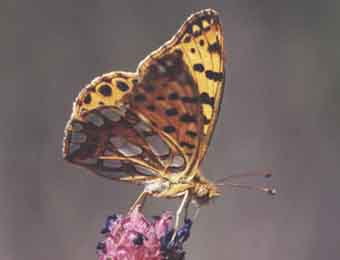
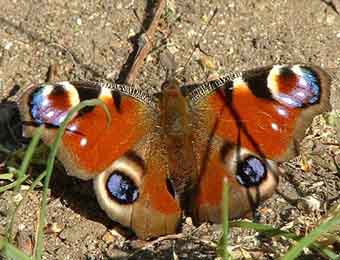
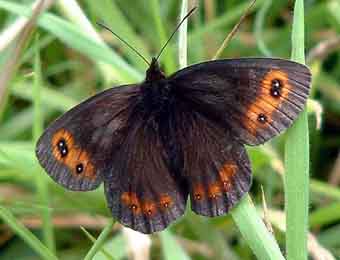
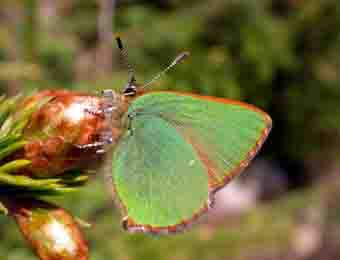
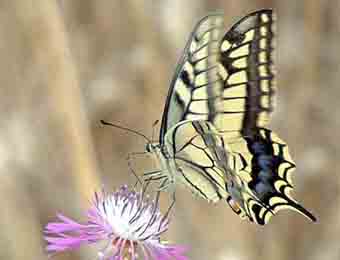

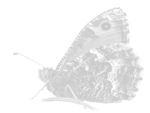

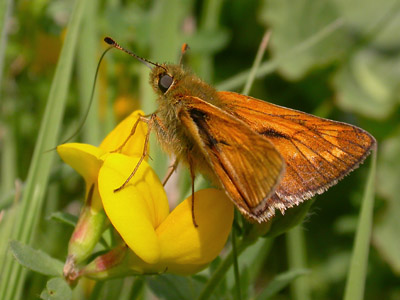

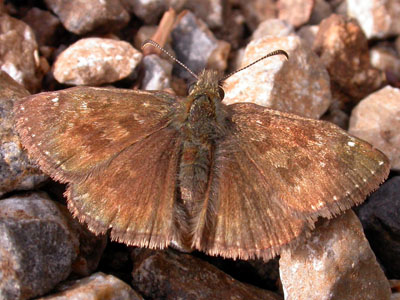
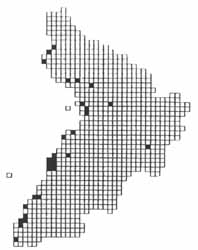

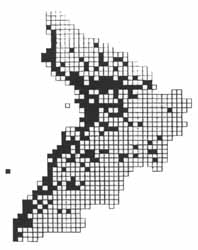
 01web.jpg)
